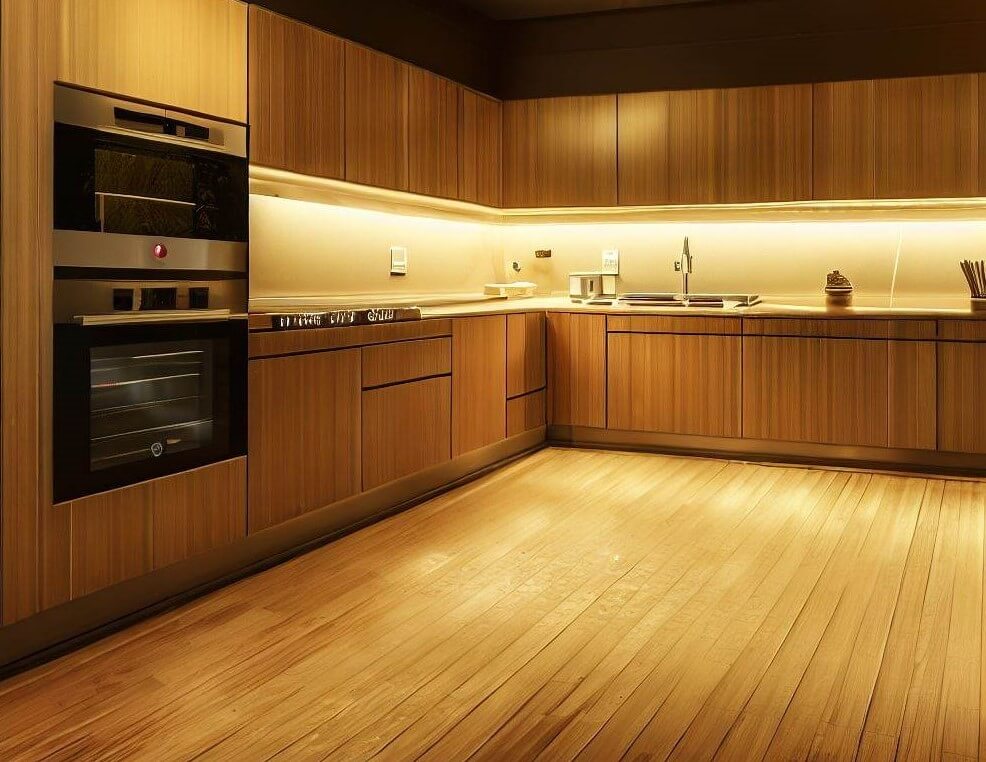Bamboo Flooring
Bamboo flooring is a popular choice for homeowners who want a sustainable, eco-friendly, and cost-effective alternative to traditional hardwood flooring. Day by day the popularity of bamboo flooring is increasing as an alternative to hardwood flooring. The growth of bamboo plants requires less time as compared to hardwood trees.

Who doesn’t want his floor to be beautiful and eco-friendly? In that case, bamboo flooring fulfills all the requirements easily, and also their maintenance work is very easy. But the price is somewhat the same for both bamboo and hardwood flooring.
Bamboo is not a tree. Actually, it is one type of grass, and it is the tallest grass in the world. It may be 130 to 150 ft long. This type of bamboo is called Giant Bamboo. But it is not the regular height of the bamboo. Usually, its height is between 15 ft to 75 ft. Although, their height and diameter vary from place to place. Read Also: 18 Types of Flooring.
Advantages of Bamboo Flooring
Following are the 8 advantages of bamboo flooring:

1. Bamboo is a very strong material. And, also their strength is more as compared to steel. They can withstand more compressive as well as tensile stress than steel.
2. Bamboo is a widely available material. Now it is also available in online marketplaces. You do not need to go anywhere to order bamboo flooring planks, you can easily place your order from your home by using a smartphone.
3. Bamboo floors are eco-friendly and durable.
4. Bamboo flooring is attractive in appearance. It gives a beautiful look after lamination.
5. It can be used as an alternative to hardwood flooring. So, it can be used where hardwood is not widely available.
6. Bamboo flooring is available various in colors and styles. So, it will help you to make your house floor as you want.
7. The installation process of bamboo flooring is very easy. No skilled labor is required. You can also install it yourself. It is very easy to cut to any required size and shape.
8. It is very easy to clean.
Disadvantages of Bamboo Flooring
The following are the disadvantages of bamboo flooring:

1. Limited Suitability: Bamboo flooring is not suitable for every room, it can not be used in the bathroom and kitchen.
2. Moisture Sensitivity: It may absorb moisture during rainy seasons and may get easily decayed due to moisture absorption. Therefore, it is necessary to maintain a consistent humidity level to prevent any possible issues.
3. Fade by sunlight: Over time, exposure to direct sunlight can cause bamboo flooring to fade or discolor. Therefore, it is not advisable to install bamboo flooring on such floors of the house where direct sunlight is likely to hit it.
4. Limited Color Options: Other types of flooring like tiles flooring, hardwood flooring, etc. offer a wide range of colors, but in the case of bamboo flooring, there is primarily available in shades of light or dark brown. This limited color option may block you to get desired design and colors for your floors.
5. It is easily spoiled by fungi and insects.
Read Also: